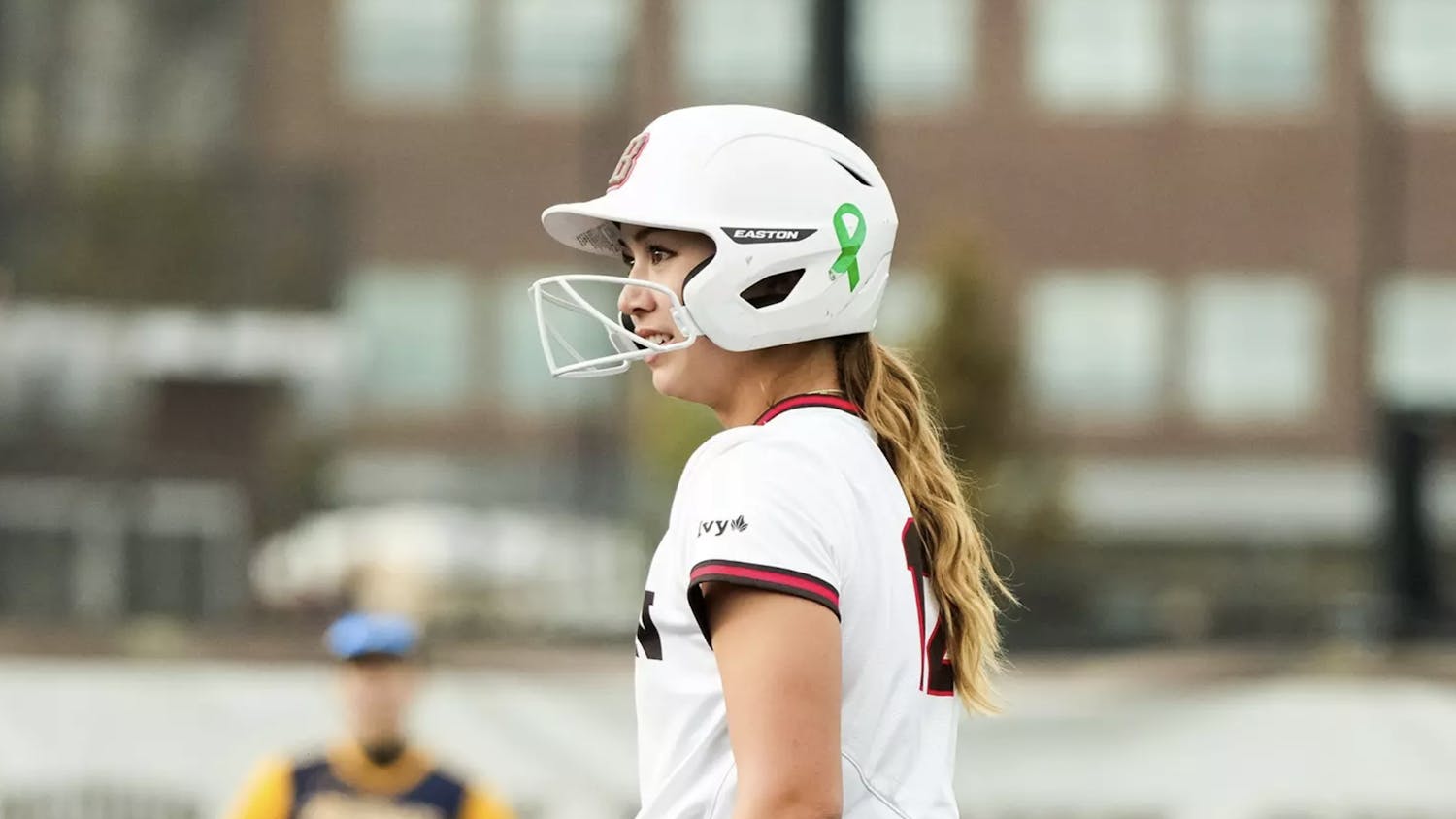The game of table tennis may just be changing forever.
Two years ago, Marco Santini ’07 created INCLUSION, a game that provides an innovative twist on traditional table tennis — it consists of patented Plexiglas side walls that attach to existing table tennis tables. It has since evolved into a product that aims to enhance the playing experience, bringing new strategies, new dimensions and new angles to the game, and it has captured the attention of expert and novice table tennis players alike.
Santini always had a love for table tennis growing up and frequently played in his parents’ basement. After graduating from Brown, he worked with NBC at the 2008 Olympics in Beijing and saw firsthand the art and beauty of table tennis as a professional sport. But at the same time, he said, he realized how stagnant the game had been since its beginnings in the late 1800s.
Santini can pinpoint when the idea for side walls came to him. One day he and a friend were trying to get to 100 rallies, keeping the ball in play as it bounced off the walls, ceiling and furniture. His father was none too pleased that the ball was striking all around the room, Santini explained, so Santini used four chairs to put up two giant pieces of plywood around the table.
“I suddenly realized it was more exciting to intentionally hit the ball off the plywood to create these new dimensions and angles,” he said.
Santini received positive feedback from friends, except that spectators complained they could not see what was happening during play.
“They had to stand behind either of the players to see the action,” he said. “That’s when I had the ‘aha!’ moment to make the walls out of a clear material, … making it an all-encompassing sport for players and their fans.”
In early 2012, Santini met an industrial designer, Sergio Gedanke. Gedanke recommended him to designer John Utley, whose prototyping facility created the first Plexiglass model.
Though the process for acquiring a patent began in 2012, it was just approved in September, Santini said.
The first few units were made in New York, and in summer 2012, Santini began to showcase the game at spaces, such as an art gallery in New York City’s Chelsea neighborhood. He said the sound of balls in play brought many curious viewers —about 100 people later signed up on an email list for INCLUSION.
“Seeing the reactions of players who try INCLUSION Table Tennis for the first time gave me faith that I was onto something special,” Santini said.
There are about 23 million table tennis tables owned in the U.S. “Those 23 million tables are an opportunity to try my product,” Santini said. In an attempt to make a more accessible design, he created an adjustable piece that attaches the Plexiglass side walls on any table tennis table. This is the model he currently sells, but in the long term, he hopes to make his own tables.
“I liked the idea of a word that appeals to novices and experts alike so I kept coming back to the word ‘include’ — I want it to be universal,” said Santini.
Shortly after his first event, Google — a company with many employees who play table tennis — approached Santini. This was a huge catalyst for his operation, he said, adding that the office manager at Google’s global headquarters in New York City set up a day-long INCLUSION event.
“Once I told everyone that I showcased at Google, more companies wanted me to showcase at their events,” Santini said. “I ended up showing at events at Chelsea Piers, Bryant Park and some tech companies.”
Because the company is entirely self-financed, Santini said that it has been very difficult to balance financial concerns and the pressure of working as a one-person team.
But Santini sold his first INCLUSION unit to the U.S. Open this past summer during his regional roll-out. He tried to reach out to the tournament in 2013 with little response, so he said this year, he took matters into his own hands.
“I decided to just show up one day at the tennis center and see what happens,” he said, adding that when he arrived, a children’s tennis camp was underway.
“Children and novices really enjoyed it because the walls served as bumpers to keep the ball in play, essentially keeping the athletes more entertained,” said Santini.
He set up INCLUSION unit for an entire day and the children loved it. Santini took videos of the action and sent them to administrators at the U.S. Open, including the director of tennis, he said.
“The best way to understand my product is to physically interact with it,” Santini said. “And if you can’t physically interact with it, the best way to understand it is through video.”
Shortly after the U.S. Open purchased his product, he was invited to speak at the Harvard Undergraduate Women in Business Conference, but he decided he could not appear at Harvard before coming back and showcasing at his alma mater. On Oct. 17, he came to the Kaspar Multipurpose Room to share his invention with the Brown Table Tennis Club.
“Before playing, I thought it would be similar to table tennis, so it wouldn’t be that hard, but actually it was so hard,” said Masahiro Nakanishi ’17, the club’s co-president. “Whenever the ball would hit the wall I would expect it to hit one way but it wouldn’t — the randomness made it more challenging.”
“I liked how it was a completely new and exciting spin on a sport that I’ve played for quite a few years,” said co-president Nancy Zhou ’17.
Zhou and Nakanishi both agreed that INLCUSION introduces an element of randomness and requires more technique and practice than traditional table tennis.
Santini said he hopes one day INCLUSION will be introduced as an Olympic sport, though he recognizes this is a far-out goal. “I realize that sounds ridiculous when sports are getting cut, but I believe that the skill level and the enhanced angles and strategies needed would be something fun to watch visually and fun to play,” he said.
Santini has also established more achievable goals — he sold a unit to the North Bay Table Tennis center in Santa Rosa, California to help develop INCLUSION on the West Coast. He was also recently approached by a London-based group that aims to mediate the effects of Alzheimer’s through table tennis, he said. They believe his product could serve as a rehabilitative tool in increasing hand-eye coordination due to the added vertical dimension of the INCLUSION wall. He added that he is currently discussing the possibility of carrying out a study with universities and labs to support its benefits.
He also aims to create a digitally responsive wall that would light up and provide feedback upon impact.
Santini said he wants to push “underground players” — casual fans and players — to become more interactive with this new table tennis variant. To do this, he set up a meeting with the owner of SPiN Table Tennis Bars — popular venues that combine table tennis with entertainment and socializing — and as a result was introduced to the actress Susan Sarandon, who has been hailed as the “queen of ping pong” by the New York Post. He learned that her daughter also graduated from Brown in 2007.
Santini’s ultimate goal is to bring more attention to table tennis as a sport. “I’ve come to realize that new inventions are, more often than not, met with trepidation,” Santini said. “But once I convince conservative table tennis players to enhance the strategic thinking with INCLUSION while using the same paddle, ball and table, they start to believe.”
“I like to think I am making table tennis a little sexier.”

ADVERTISEMENT




